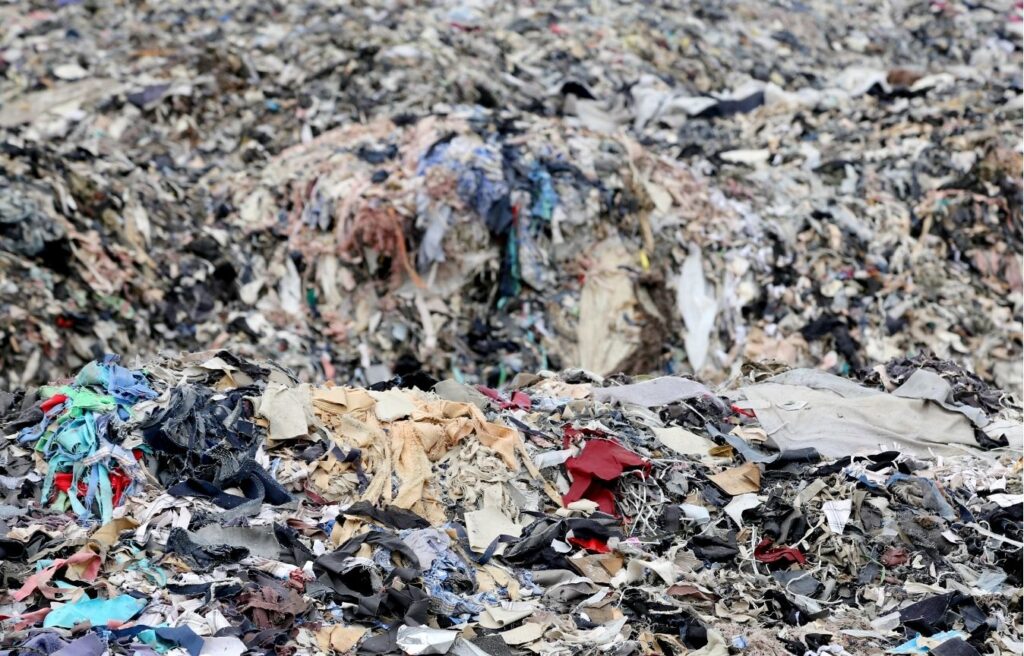In the textile and fashion industry, people often see profitability and sustainability as opposing goals. On one hand, businesses strive to maximize profits by streamlining operations, reducing costs, and boosting output. On the other hand, sustainability requires long-term investments in eco-friendly practices, ethical sourcing, and waste reduction. Balancing these priorities can feel like an uphill battle. However, technologies like Radio Frequency Identification (RFID) are proving to be game-changers, enabling companies to achieve both profitability and sustainability without conflict.
This blog post explores the main challenges the textile and apparel industry faces in achieving these goals, how RFID can address these challenges, and why it offers a viable solution for balancing profitability and sustainability in parallel.
Challenges in Achieving Profitability and Sustainability
The textile and apparel industry is one of the largest in the world, but it also faces significant challenges and ongoing pressure on its journey toward profitability and sustainability.
Challenges to Profitability
Profitability in this industry depends on efficient production, inventory management, and supply chain visibility. Unfortunately, many companies struggle with the following:
-
- Low Inventory Accuracy and Poor Visibility: This leads to an unbalanced demand vs. supply per SKU, resulting in high stockouts and constant markdowns, impacting sales and eroding profits.
-
- Overproduction and Overstocking: Producing too much inventory leads to unsold goods, which tie up capital and increase storage costs. A study by McKinsey & Company found that overproduction costs the fashion industry billions of dollars annually.
-
- Inefficient Supply Chains: A lack of real-time visibility into supply chain operations often results in delays, higher transportation costs, and wasted resources.
-
- Labor Costs and Errors: Manual tracking of inventory and shipments can lead to human errors, increased labor costs, and inefficiencies across the value chain.
Challenges to Sustainability
Sustainability, on the other hand, requires addressing environmental and social issues that are deeply rooted in the industry:
-
- Waste Generation: Overproduction and fast fashion trends drive immense textile waste, with only 1% being recycled into clothing. According to the Ellen MacArthur Foundation and Earth.org, of the 100 billion garments produced annually, 92 million tons end up in landfills. Fast fashion alone contributes nearly 10% of global carbon emissions and is also responsible for 10% of microplastics in the ocean. If current trends continue, textile waste could reach 134 million tons annually, and global emissions may double by 2030.
-
- Energy and Water Consumption: Textile production processes often consume significant amounts of energy and water, contributing to environmental degradation. The dyeing and finishing processes applied to fabrics generate 3% of the global CO2 emissions as well as over 20% of global water pollution. In it takes 20,000 litres of water to produce one kilogram of dyed cotton.
-
- Ethical Concerns: Ensuring fair labor practices and transparent sourcing is often overlooked in the race to cut costs, leading to ethical violations.

How RFID Solves the Industry’s Challenges
RFID technology, which uses electromagnetic fields to identify and track tags on objects, is a powerful solution for tackling profitability and sustainability challenges in the textile and apparel industry. Here’s how:
-
- Improved Inventory Management: RFID provides real-time insights into stock levels and locations, enabling precise inventory tracking throughout the supply chain. This reduces overproduction and overstocking by aligning production with demand. RFID can lower stockouts by 40% and improve inventory accuracy up to 95% (McKinsey). By reducing waste and improving cash flow, RFID enhances profitability while contributing to sustainability.
-
- Supply Chain Transparency: Lack of supply chain visibility is a key challenge in the apparel industry. RFID addresses this by tracking materials and products through sourcing, production, distribution, and retail. Enhanced transparency allows companies to identify inefficiencies, cut delays, and reduce resource waste—critical for achieving profitability and sustainability.
-
- Reduction of Manual Labor and Errors: RFID automates inventory and shipment tracking, eliminating the need for error-prone manual processes. This lowers labor costs, improves accuracy, and ensures efficient resource allocation, driving operational efficiency and profitability.
-
- Enhanced Sustainability Compliance: RFID tags can store product data through a Digital Product Passport (DPP), which includes details about origin, manufacturing, and the product journey. This helps businesses comply with sustainability standards and regulations. Consumers seeking transparency about environmental and ethical impacts benefit from this information, boosting brand trust and loyalty. RFID also reduces waste and carbon footprints by optimizing production and transportation.
-
- Traceability Beyond the Selling Point: RFID tags embedded in products can aid in traceability beyond the point of sale, facilitating sorting for proper and cost-effective recycling and upcycling. This ensures that materials are efficiently reused, reducing environmental impact and promoting a circular economy.

Why RFID is the Best Approach to Balancing Profitability and Sustainability
RFID technology stands out as a pragmatic solution for achieving profitability and sustainability in parallel for several reasons:
-
- Cost-Effectiveness: While implementing RFID requires an initial investment, the long-term cost savings are substantial. By reducing waste, improving inventory accuracy, and streamlining operations, companies can recoup their investment quickly (see our ROI calculator). Furthermore, RFID enables businesses to avoid the financial penalties associated with unsustainable practices, such as fines for non-compliance with environmental regulations or loss of customers due to ethical concerns.
-
- Scalability: RFID systems are highly scalable and can be tailored to the needs of businesses of all sizes. Whether you’re a small brand or a global retailer, RFID can be integrated into your operations to drive efficiencies and improve sustainability outcomes.
-
- Consumer Demand: Today’s consumers are more conscious than ever about the environmental and ethical impact of the products they purchase. RFID enables companies to provide the transparency consumers demand, enhancing their reputation and boosting customer loyalty. This not only helps to drive sales but also aligns with long-term sustainability goals.
-
- Competitive Advantage: Early adopters of RFID technology often gain a significant competitive edge. By improving operational efficiency and demonstrating a commitment to sustainability, businesses can differentiate themselves in a crowded market and attract environmentally conscious consumers and investors.
Conclusion
The textile and apparel industry faces immense challenges in balancing profitability and sustainability, but RFID technology offers a viable path forward. By improving inventory management, increasing supply chain transparency, reducing manual errors, and enhancing sustainability metrics, RFID helps businesses address the root causes of inefficiency and waste while boosting their bottom line. Investing in RFID is more than just a technological upgrade; it’s a strategic decision that positions companies for long-term growth and resilience. As the industry continues to evolve, embracing innovative solutions like RFID will be essential to achieving a future where profitability and sustainability go hand in hand.
Contact Invento to find out more about these solutions and how we can help you to implement them in your retail operation.
Pingback: How to Sell Sustainable Products That Are Not in Stock with an Endless Aisle Strategy | Ourgoodbrands